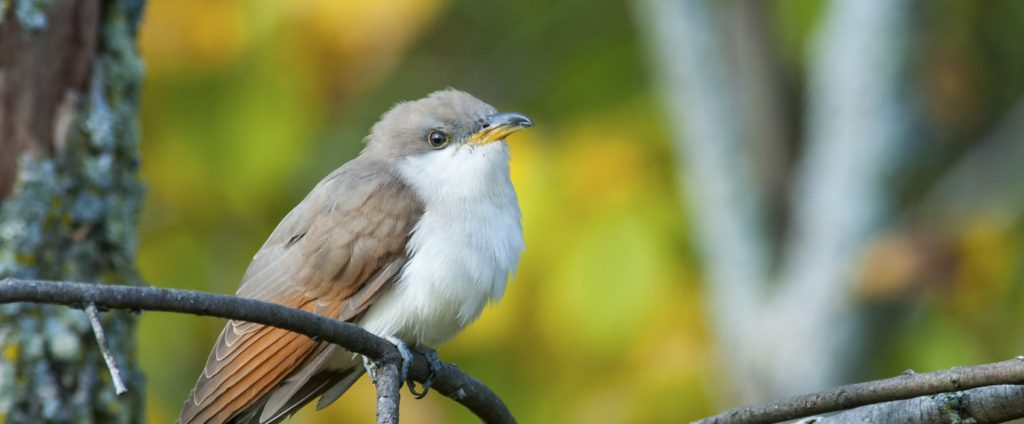GEORGETOWN, TX: A diverse group of local governments, landowners and industry representatives has challenged the U.S. Fish and Wildlife Service (Service) by filing a petition to remove the Western Distinct Population Segment of the Yellow-billed Cuckoo (YBCU; Coccyzus americanus), from the federal endangered species list. The western segment is currently listed as threatened.
The group of petitioners includes American Stewards of Liberty (ASL), National Cattleman’s Beef Association (NCBA), Public Lands Council (PLC), Arizona Cattlemen’s Association (ACA), and Arizona Mining Association (AMA). Additionally, the Winkelman and Hereford Natural Resource Conservation Districts in Arizona joined the effort, as well as WestLand Resources, and Mr. Jim Chilton from Arizona.
The petitioners believe the original listing under the Obama Administration in 2014, was made in error and falsely created a Distinct Population Segment (DPS) resulting in the federal threatened designation. When the Service prepared their analysis, they carved out the western population giving it the DPS designation. It was a controversial move criticized in part because genetic studies did not support the distinction. This has created unnecessary and costly restrictions on landowners within the designated critical habitat for the bird.
The YBCU is a neotropical migrant bird that winters in South America and breeds in North America during the summer. When the YBCU migrates north in the summer months, it splits into two groups – one to the west of the Rocky Mountains and one to the east. It’s the group that flies west the Service erroneously determined was a “distinct population segment” giving it the ability to make a “threatened” determination. According to the Service, the western DPS can be found in 12 western states.
The petition includes new genetic and morphological data as well as new analyses of older data supporting the conclusion that the western segment of the YBCU is not a discrete and significant population segment that meets the requirements for listing under the Endangered Species Act (ESA).
“The Obama administrations’ analysis of the genetic and habitat data was believed to be in error at the time of listing,” commented Margaret Byfield, Executive Director of ASL. “However, the new data we have today leaves no doubt that the listing decision needs to be corrected.”
An additional concern for the petitioners is that the Service used the same data to draw two different conclusions when making their original decisions. The Service relied on the assumption that YBCU habitat requirements in the Southwest and northern Mexico were largely restricted to areas with expansive tracts of riparian vegetation along major river systems. This, in part, led to their listing decision.
Later, when designating the critical habitat area subject to federal restrictions, the Service proposed to designate thousands of acres of the Southwest as critical habitat that greatly expanded what was considered habitat in the Service’s listing decision.
WestLand Resources biologist, David Cerasale, explains: “When threats to the species were analyzed in the listing decision, the Service concluded that the species was largely limited to expansive blocks of riparian vegetation along large riverine systems in the Southwest. However, when proposing to designate critical habitat for the species, the Service considered as critical habitat numerous smaller drainages that are considerably different than those contemplated in its analyses in the listing decision, including some areas that are almost completely devoid of riparian vegetation.”
The new survey data that has since been collected further affirms that much of the YBCU’s habitat is outside of the large river systems and is substantially larger than the Service acknowledged when they listed the species.
Additionally, the new data not only expanded the understanding of the amount of suitable habitat, but it also showed the threats analyzed by the Service did not rise to the level supporting their decision to list the DPS under the Endangered Species Act.
“The Service underestimated the amount of suitable habitat which resulted in its listing and made an inaccurate analysis of threats,” commented Ethan Lane, Executive Director of NCBA and PLC. “As a result, many of the natural resource industries in the west have been harmed, especially family ranchers.”
The Petitioners believe they have provided substantial scientific and commercial information demonstrating delisting is warranted, and are asking the Service to make a positive 90-day finding. If the Service makes this ruling, a 12-month review period will be opened allowing the Service to thoroughly analyze the status of the species and seek additional information from the public, which petitioners believe will lead the Service to reverse the prior administration’s decision.


